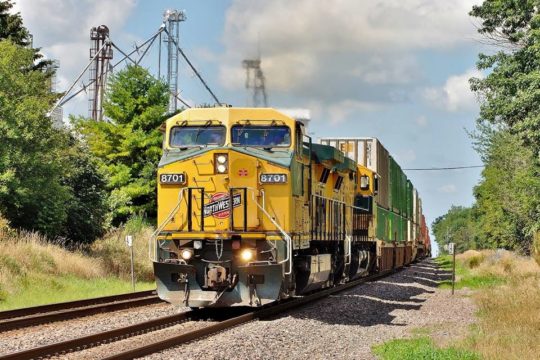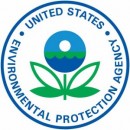
It’s still a few weeks until Labor Day and the unofficial end of the season. However in strong contrast to the recent summer regulatory doldrums, as we head towards summer’s end the Federal Register was busy indeed this week with multiple large published actions by a number of relevant agencies. Grab your coffee and find a comfortable chair, because there’s a lot to get through this week! See all the action below:
PHMSA
PHMSA is extending the period for comments on the State of North Dakota and the State of Montana’s application for an administrative determination as to whether Federal hazardous material transportation law preempts the State of Washington’s rules relating to the volatility of crude oil received in the state. Comments received on or before September 23, 2019, and rebuttal comments received on or before October 23, 2019, will be considered before an administrative determination is issued by PHMSA’s Chief Counsel. See the extension here:
https://www.govinfo.gov/content/pkg/FR-2019-08-13/pdf/2019-17255.pdf
The agency published a fairly major new NPRM (HM-219C) that will if adopted as proposed impose a number of relevant revisions to the HMR. In this NPRM, PHMSA proposes to:
- Prohibit after December 31, 2020, the use of rail tank cars with shells or heads constructed of non-normalized steel used for transportation of poison by-inhalation (PIH) materials.
- Harmonize the limited quantity exceptions for more than 100 entries for corrosive materials in the HMT.
- Revise § 173.302(b)(2) to allow a minimum height of 12 mm (0.47 inches) for a proper shipping name marked on a portable tank with a capacity of less than 3,785 L (1,000 gallons).
- Revise § 173.28(c)(1)(i) to add the words ‘‘substantially removed’’ in the context of cleaning metal drums for reuse and clarifying the requisite cleaning standard.
- Revise § 173.5b to allow for the continued use of Portable and Mobile Refrigerator Systems placed into service prior to 1991 that are rated to a minimum service pressure of 250 pounds per square inch (psig).
- Incorporate by reference updated versions of multiple CGA publications.
- Remove the reference to Special Provision 103 in § 172.101 from Column (7) for four HMT entries to allow them to be shipped as safety devices.
- Revise the HMT entry for ‘‘UN0503, Safety Devices, pyrotechnic’’ to allow the shipper to use the exceptions provided in § 173.166(d).
- Remove the words ‘‘manufactured before September 1, 1995’’ from § 180.417(a)(3) to allow for an alternative report for cargo tanks manufactured after September 1, 1985.
- Revise the basis weight tolerance provided in § 178.521 from ±5 percent to ±10 percent from the nominal basis weight reported in the initial design qualification test report for paper shipping sacks.
- Revise § 173.308(d)(3) to harmonize with the IMDG Code by removing the requirement for a closed transport container to have the warning mark ‘‘WARNING—MAY CONTAIN EXPLOSIVE MIXTURES WITH AIR— KEEP IGNITION SOURCES AWAY WHEN OPENING’’ when transporting lighters.
- Make the ‘‘interim’’ rail tank car specifications the ‘‘final’’ specifications for the transportation of PIH materials.
- Prohibit after December 31, 2027, the use of certain rail tank cars for the transportation of PIH materials.
- Allow for all waste materials to be managed in accordance with the lab pack exception and associated paragraphs in § 173.12 irrespective of whether they meet the definition of a hazardous waste per the EPA or the RCRA.
- Incorporate by reference the 2017 version of the ASME BPVC Sections II (Parts A and B, C and D), VIII (Division 1), and IX into the HMR.
- Revise §§ 171.23, 173.302, and 173.304 to permit the import of filled pi-marked foreign pressure receptacles for intermediate storage, transport to point of use, discharge, and export as well as the import of certain pi-marked foreign pressure receptacles filling, intermediate storage, and export.
- Revise the language in § 173.166 to clarify the term ‘‘recycle’’ by adding the word ‘‘metal’’ in front of ‘‘recycling.’’
- Correct § 171.7(r) to include the address of the IME and to incorporate the IME/Association of Energy Service Companies (AESC) JPG Standard, also known as the ‘‘Guide to Obtaining DOT Approval of Jet Perforating Guns using AESC/IME Perforating Gun Specifications,’’ Ver. 02, dated September 1, 2017 as material incorporated by reference.
- Update to the January 1, 2018 version of the APA Standard 87–1, ‘‘Standard for Construction and Approval for Transportation of Fireworks, Novelties, and Theatrical Pyrotechnics’’, which is currently incorporated by reference in § 171.7(f) of the HMR.
Comments on the proposed rule are due to PHMSA by October 15th, 2019. See the NPRM here:
https://www.govinfo.gov/content/pkg/FR-2019-08-14/pdf/2019-16675.pdf
FMCSA
The agency published its annual ICR to states and recognized tribal authorities requiring them to provide updated information about designated highway routes for the transport of hazardous materials within their jurisdictions. The agency uses the information to revise its published route guides. The ICR information is due by October 11th. See the ICR here:
https://www.govinfo.gov/content/pkg/FR-2019-08-13/pdf/2019-17343.pdf
FRA
The agency published a request for comments on an AAR request for the special approval of a set of standards related to safety appliances for certain newly manufactured rail tank cars. The AAR is an industry umbrella group that often represents the interests of the railroad industry as well as its related manufacturing base. See the action here:
https://www.govinfo.gov/content/pkg/FR-2019-08-13/pdf/2019-17228.pdf
The agency also published a grant notice. It details the application requirements and procedures to obtain grant funding for eligible projects under the Consolidated Rail Infrastructure and Safety Improvements (CRISI) Program. This leverages private, state and local investments to support safety enhancements and general improvements to infrastructure for both intercity passenger and freight railroads. Applications for funding under this solicitation are due no later than 5:00 p.m. EDT, October 18, 2019. Get all the needed information right here:
https://www.govinfo.gov/content/pkg/FR-2019-08-19/pdf/2019-17741.pdf
US Coast Guard
The Coast Guard is proposing to amend the requirements regulating personnel permitted to serve as a person in charge (PIC) of fuel oil transfers on an inspected vessel by adding the option of using a letter of designation (LOD) in lieu of a Merchant Mariner Credential (MMC) with a Tankerman-PIC endorsement. This will support the current transition underway that will regulated the operation of towing and pushing vessels involved in domestic waterway activities. See the move right here:
https://www.govinfo.gov/content/pkg/FR-2019-08-14/pdf/2019-17457.pdf
CPSC
The agency announced a submission to the Office of Management and Budget (OMB), requesting an extension of approval for a collection of information associated with testing and recordkeeping requirements in regulations implementing the Safety Standard for Cigarette Lighters, which are a regulated hazardous material for transport. Written comments on this request for extension of approval of information collection requirements should be submitted by September 16, 2019. See the request here:
https://www.govinfo.gov/content/pkg/FR-2019-08-15/pdf/2019-17493.pdf
USEPA
As required under of the Toxic Substances Control Act (TSCA) and implementing regulations, EPA is proposing to designate 20 chemical substances as Low-Priority Substances for which risk evaluation is not warranted at this time. This will have the effect of generally making the chemicals easier to acquire, handle, and dispose of. EPA is providing a 90-day comment period during which interested persons may provide comments on the proposed designations. Comments must be received on or before November 13, 2019. Here’s your portal for action:
https://www.govinfo.gov/content/pkg/FR-2019-08-15/pdf/2019-17558.pdf
OSHA
OSHA is requesting information on the effectiveness of engineering and work practice control methods not currently included for the tasks and equipment listed on Table 1 of the Respirable Crystalline Silica standard for construction. The agency is also requesting information on tasks and equipment involving exposure to respirable crystalline silica not listed on Table 1 along with information on the effectiveness of engineering and work practice control methods in limiting worker exposure to respirable crystalline silica when performing those tasks. Finally, OSHA is requesting information and comment on whether there are additional circumstances where it would be appropriate to permit employers covered by the Respirable Crystalline Silica standards for general industry and maritime to comply with the silica standard for construction. This RFI requests comment and information, including exposure data, which could assist the agency in assessing whether revisions to the standards may be appropriate. Comments are due on or before October 15, 2019. See all the details here:
https://www.govinfo.gov/content/pkg/FR-2019-08-15/pdf/2019-17450.pdf
Labelmaster is a full-service provider of products, shipping and training software, and professional consulting services to assist the DG and HS&E professional to comply with national and international regulations. See our full line of solutions at labelmaster.com.


